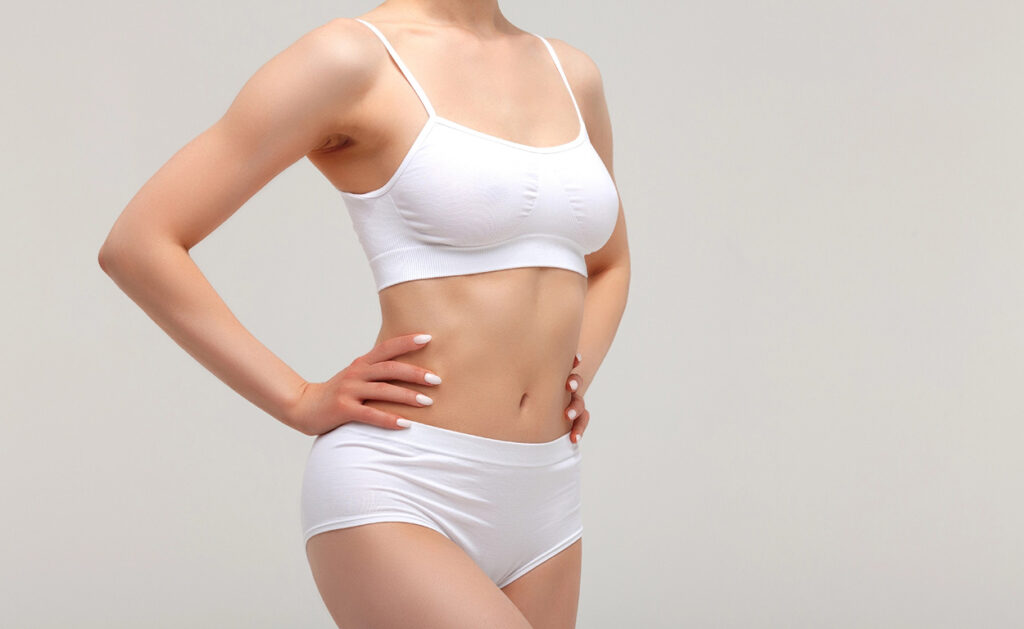
Liposuction is the go-to cosmetic surgery to banish stubborn fat cells that fail to respond to changes in diet and exercise. The procedure also effectively contours areas like the abdomen for a more sculpted look that proves difficult to achieve for many, even with targeted workouts.
Read on to learn more about this sophisticated treatment and what you can expect from the results.
Did you know? At Revive Wellness Centers, our resident cosmetic surgeon, Dr. Allan Wu is an expert in body contouring with liposuction and smart liposuction, a laser technique that lets patients recover in minimal time. Request an appointment today.
How does liposuction work?
As the name suggests, liposuction is a type of cosmetic surgery that uses suction to remove fat from targeted areas of the body. Medically known as a lipoplasty, liposuction helps methodically reshape these areas, which is why it’s sometimes referred to as body contouring.
Patients who otherwise have a healthy body weight but struggle with localized fat deposits are the most common recipients. Specifically, liposuction removes fat cells in the abdomen, ankles, back, buttocks, calves, chest, hips, thighs, chin, neck, and upper arms. It works like this:
Liposuction decreases the number of fat cells in the treatment area by physically removing fat, how much will depend on the appearance, volume, and the pre-discussed expectations of the patient and surgeon.
This procedure effectively changes the outward shape of the body, and the results remain permanent, provided the patient’s weight stays relatively the same as it was after the procedure. That’s because after liposuction, the skin will naturally mold itself into the new shapes that have been contoured by the surgeon.
What is the procedure like?
After you’ve had a thorough medical consultation with your cosmetic surgeon, a liposuction procedure will be scheduled. How the procedure is performed depends on the technique:
In a suction-assisted liposuction, the most common and traditional technique, a mixture of numbing and saline is injected into the treatment area. Your surgeon will then make small incisions and insert a narrow tube connected to an external vacuum that suctions the fat cells out.
With laser-assisted liposuction, used for smart lipo for shorter downtime, the surgeon breaks down fat deposits with a laser device instead and removes them through a thin tube.
Who is a good candidate for liposuction?
Patients must be in good health and free from medical conditions that could cause surgical complications, like coronary artery disease, diabetes, a weakened immune system and more.
Remember that liposuction results are only permanent if you’re able to maintain your weight after treatment, so the best candidates are those with a steady body weight.
Potential risks
As with any major surgery, liposuction has potential risks that you need to weigh with your cosmetic surgeon beforehand. These include:
- Excessive bleeding
- Reaction to anesthesia
- Infection
- Internal puncture
- Fat embolism
- Lidocaine toxicity
- Heart problems
- Kidney problems
- Lung problems
What to expect before, during & after treatment
Before getting liposuction, your surgeon will advise you to stop taking certain medications like blood thinners and not smoking a week beforehand. Be sure to follow the surgeon’s pre-surgery instructions carefully to increase your chances of a safe, successful treatment.
Liposuction surgery can be performed in a medical office/clinic when there’s not a lot of fat to be removed. If you’re getting extensive fat removal or concurrent procedures (like a tummy tuck, etc), the procedure will be performed in a surgery center.
You’ll need to arrange for someone to pick you up and take you home post-surgery, as well as to be there with you through the night following the procedure.
Depending on your individual treatment plan, your surgeon will either use local or general anesthetic. Your blood pressure and heart rate are constantly monitored throughout the procedure, which can last from one hour to several hours, depending on the volume of fat in the treatment area.
Patients who undergo general anesthesia will awake in a recovery room, and usually all liposuction patients will be monitored immediately following surgery. Those with more extensive fat removal may require overnight monitoring in the hospital.
You can expect swelling, pain, and bruises which can be managed with medications, and you’ll also be prescribed antibiotics to prevent infection. You will also wear a compression garment for a short period of time after surgery. Generally, a few days of recovery are necessary before returning to work, and a few weeks are needed before you can resume exercise.
Results
During the first couple weeks after liposuction, the remaining fat in the area will settle into the newly contoured shape. Swelling takes between several weeks and several months to subside, after which you’ll be able to see the final results. Liposuction results are permanent, provided the surgeon is skilled and there are no significant fluctuations in body weight afterwards.
What liposuction doesn’t do
Although liposuction does wonders on getting rid of unsightly fat, it won’t address any issues on the skin’s surface like stretch marks or cellulite. Also, the visceral abdominal fat, which is in between the organs, cannot be with liposuction. This fat is addressed with weight loss.
Is liposuction right for you?
For stubborn fat cells, liposuction is a godsend when lifestyle changes like diet, exercise, and self-care simply aren’t enough to get rid of them. To find out if you’re a good candidate for liposuction, request an appointment today at Revive Wellness Centers in Torrance & Palm Springs for a thorough consultation.

